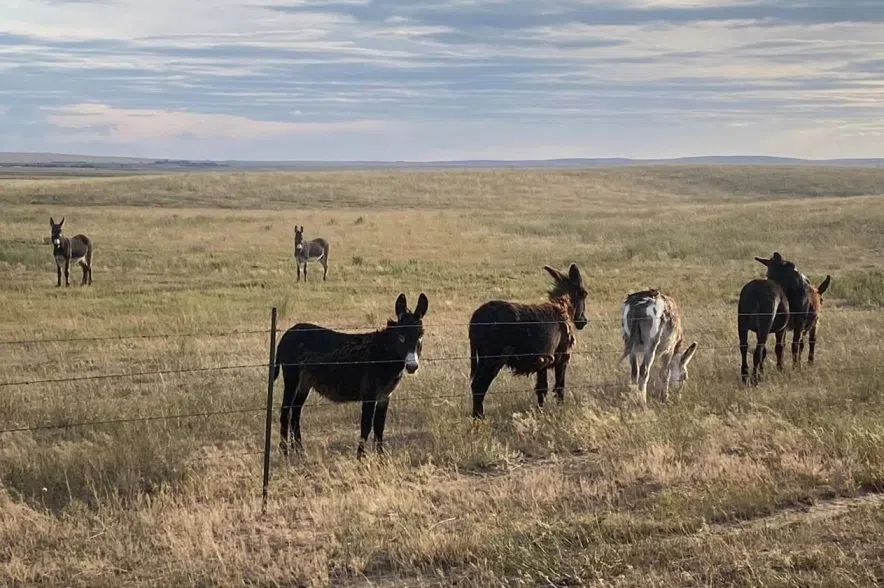By Giancarlo Cininni
A Saskatchewan farmer has turned to unlikely allies to fend off a cougar.
Miles Petersen has deployed a drove of donkeys to protect his cattle.
On Tuesday, the Mortlach-area rancher was out with a hired hand tagging calves when they saw a large cougar had cornered a group of cows in a paddock.
“I couldn’t believe it. He’s a fair-sized animal — and (he had quite) the tail on him. He’s huge. Even the hired hand couldn’t believe it at all,” Petersen said.
It’s not the first time Petersen has seen cougars on his ranch. The last time he had a cougar visit his ranch was two years ago.
“Two years ago, I lost some calves from a cougar and two years prior to that, I lost some calves,” he said. “He’s back in the area, so I just thought I’d let everybody know in Mortlach.”
The community is about 45 kilometres west of Moose Jaw.
Worried for his cattle, Petersen decided to use a non-lethal approach to protect his herd. That’s where the donkeys come in.
“I put them in different paddocks and it seems like it really helps …” said Petersen, who also uses light towers to illuminate his property. “The donkeys, they get hee-hawing back and forth in the middle of the night, and (there’s all) the activity. It scares the (crap) out of (the predators).”
According to Canadian Geographic, while cougars were once an overhunted species, their numbers are starting to rise across the continent. As deer populations increase, cougars have been following them, and are returning to places that they historically inhabited.
A significant population pocket is in the Cypress Hills area of Saskatchewan, which Canadian Geographic said at one point had the highest density of cougars in North America per 100 kilometres.
Cougars will travel large distances to find new territories, and have been moving eastward towards the Saskatchewan agricultural belt.
The Government of Saskatchewan said cougars are among the most evasive and secretive of all predators in Saskatchewan. Their main prey is deer, but they’re also known to threaten livestock at times.
“When you get more into springtime, I’ve been told they go after (horses). They really love foals; that’s their No. 1 (target),” Petersen said. “Next is the calves. And deer – fawns – they really go for that.”
Cougars are not listed as a vulnerable, threatened or endangered species in Saskatchewan, but they are protected. However, the government says landowners can kill any predator, including cougars, without a licence if the animal is on their land and the landowners feel it poses a threat to their property or livestock.
A local conservation officer must be notified if a cougar is killed.
There have been other instances of wildlife preying on livestock in Saskatchewan this year. Ranchers in the Kamsack area are seeing losses, citing wolves as the probable cause.
To report an aggressive encounter with cougars or wildlife, call the Turn in Poachers and Polluters line at 1-800-667-7561. Assistance is also available from the Saskatchewan Crop Insurance Corporation predator control specialists at 1-888-935-0000.











